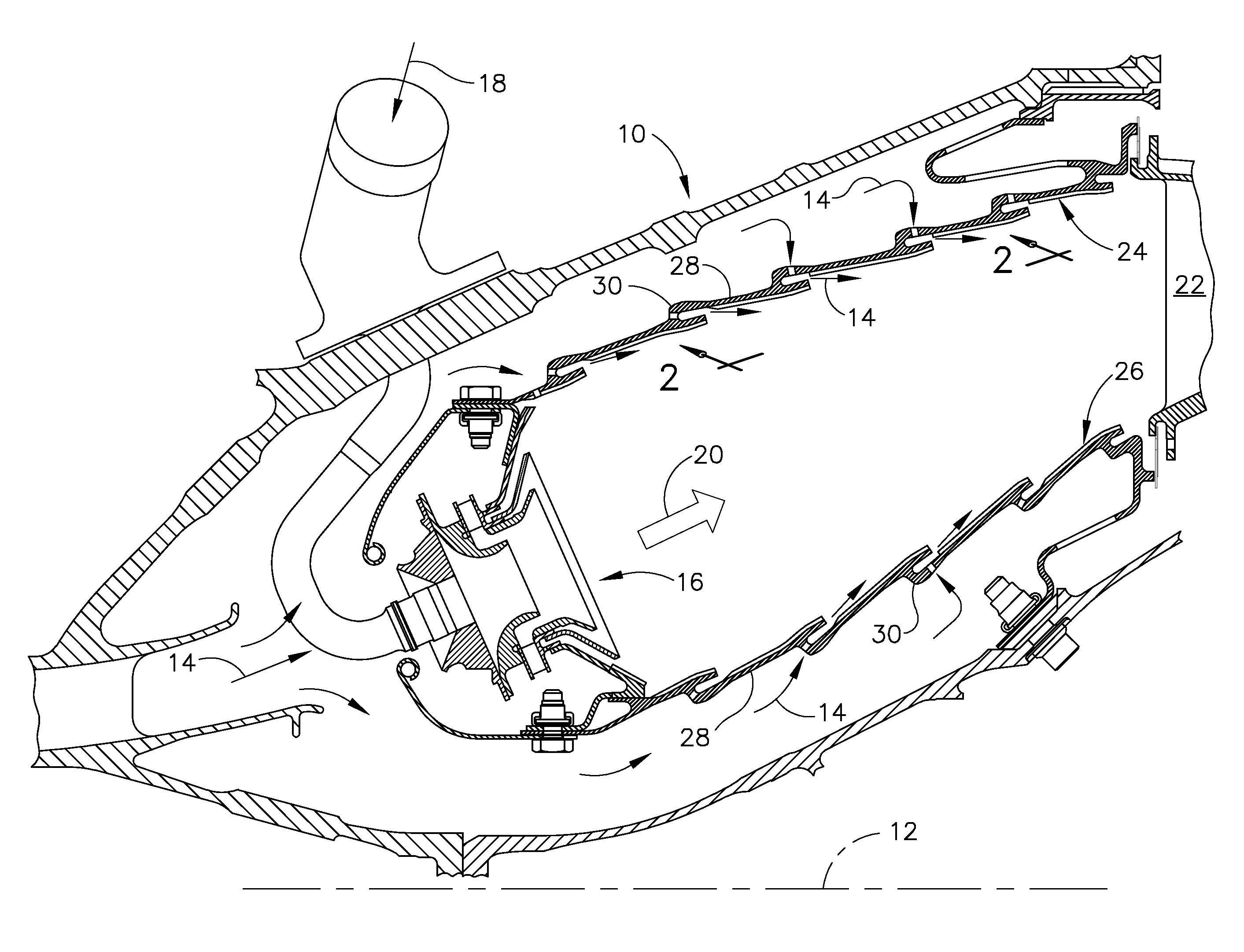Methods for Coating Articles Exposed to Hot and Harsh Environments
a technology for coating articles and environments, applied in the direction of superimposed coating process, light and heating apparatus, transportation and packaging, etc., can solve the problems of affecting the service life of the tbc system, and affecting the effect of tbc system performance, so as to prevent or mitigate the effect of cmas infiltration
- Summary
- Abstract
- Description
- Claims
- Application Information
AI Technical Summary
Benefits of technology
Problems solved by technology
Method used
Image
Examples
example 1
[0045]A multi-layered coating system on a substrate (or on a bond coated substrate) includes an inner ceramic layer consisting substantially of yttria stabilized zirconia having a thickness of from about 127 to about 254 microns (about 5 to about 10 mils). A first intermediate alumina-containing layer overlying the inner layer consists substantially of alumina or alumina and up to about 50% by weight titania deposited by an HVOF technique to a thickness of from about 25 to about 51 microns (about 1 to 2 mils). A first intermediate ceramic layer overlying the first intermediate alumina-containing layer consists substantially of yttria stabilized zirconia having a thickness of from about 127 to about 254 microns (about 5 to about 10 mils). An outer alumina-containing layer overlying the first intermediate ceramic layer consists substantially of alumina or alumina and up to about 50% by weight titania, deposited to a thickness of about 25 to about 51 microns (about 1-2 mils) utilizing ...
example 2
[0046]A multi-layered coating system on a substrate (or a bond coated substrate) includes an inner ceramic layer consisting substantially of yttria stabilized zirconia having a thickness of from about 127 to about 254 microns (about 5 to about 10 mils). A first intermediate alumina-containing layer overlying the inner ceramic layer includes an air plasma sprayed graded layer having a thickness of from about 127 to about 254 microns (about 5-10 mils) 50% by weight alumina (or alumina / titania) the balance yttria stabilized zirconia and increasing the content of alumina (or alumina / titania) in the intermediate alumina-containing layer. An outer alumina or alumina / titania layer is applied using an HVOF technique to a thickness of from about 25 to about 51 microns (about 1-2 mils).
PUM
| Property | Measurement | Unit |
|---|---|---|
| thickness | aaaaa | aaaaa |
| thickness | aaaaa | aaaaa |
| thickness | aaaaa | aaaaa |
Abstract
Description
Claims
Application Information
 Login to View More
Login to View More - R&D
- Intellectual Property
- Life Sciences
- Materials
- Tech Scout
- Unparalleled Data Quality
- Higher Quality Content
- 60% Fewer Hallucinations
Browse by: Latest US Patents, China's latest patents, Technical Efficacy Thesaurus, Application Domain, Technology Topic, Popular Technical Reports.
© 2025 PatSnap. All rights reserved.Legal|Privacy policy|Modern Slavery Act Transparency Statement|Sitemap|About US| Contact US: help@patsnap.com



